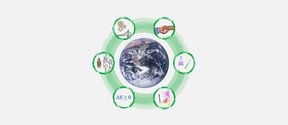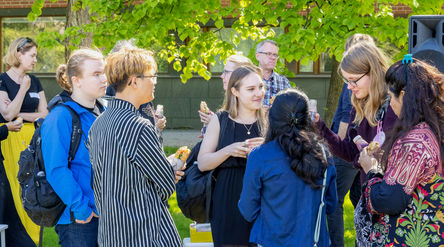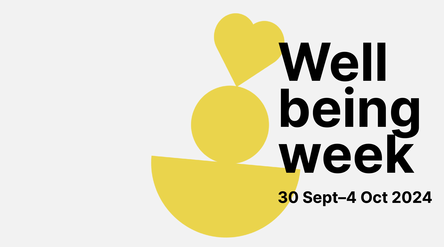Dealing With Feelings
The opportunity to be authentic, forms a central dimension of how satisfied a person is with their life.

Yes, several studies have found a correlation between gratitude and wellbeing. Hence, keeping a diary can bring more happiness to life through gratitude. Coping well with problems can increase resilience and strengthen the feeling that difficult situations can be overcome in the future. But if everything is approached in such a way that getting through the situation depends on the attitude, and every cloud has a silver lining if you want to see it, we are approaching a phenomenon called toxic positivity.
Toxic positivity is not yet scientifically defined, but it generally refers to behaviour that emphasizes an optimistic approach to situations, and downplays, minimizes, or even denies all other emotions as harmful. Judith Halberstram is credited as the inventor of the term, but it is strongly based on research on unrealistic optimism that began in the 1980s in the United States.
Happiness and attitude can be worked on, but only to a certain extent. One of the most significant downsides of toxic positivity is that it leaves no room for other emotions. With that, we may begin to see negativity, dissatisfaction, and unhappiness as moral faults and individual failures. Anyone who complains has an attitude problem. A depressed person just hasn't worked hard enough for their happiness. An employee exhausted by the workload is just unable to focus on what is good.
Quotes from real everyday situations:
A crisis is always an opportunity for something new and better. Let's not focus on these unpleasant feelings but think about how to move on from here.
If only you would focus more on what is going well. A gratitude journal has helped me. Have you heard of it?
Don't worry about that. In this field, you have to learn to endure! Now let's move on!
Traditionally, the approach to emotions in the workplace has been that they don't belong there. Emotions should be left outside the workplace, and talking about life outside one's work is 'unprofessional'. In recent years, however, there has been more focus on emotions at work. The attention is shifting to understanding the importance of people bringing their entire range of emotions to the workplace. After all, they are people, not robots.
According to research, denying or covering up feelings can increase the sense of stress in the body. Hence, if you are not allowed to share what bothers you, your stress levels may shoot up. In addition, the lack of authenticity and not being fully yourself may lead to internal conflicts and an increased risk of burnout. Hiding feelings can also be exhausting. A lot of energy goes into making sure that no one notices what you're actually thinking or how badly you are feeling.
The side effect of toxic positivity is that people do not dare or want to point out mistakes, ineffective practices, or direct risk factors. When the positive dudes always find the good sides in everything, there are actually no mistakes. This backfires when the lack of presenting views considered negative turns against the company and its operations, even endangering its existence.
In recent years, there has been a happiness boom. Happiness has become something to strive for and the pressure to be positive is part of this trend. Why do we aim for positivity at the expense of our wellbeing?
One explanation is that several studies have found correlations between happiness and efficiency, creativity, commitment, and low absenteeism. Although there have been studies questioning these connections and the correlations usually do not tell which factor affects which and how, the results have been interpreted so that happy employees are better employees. Positive people have become desirable, even though studies have not been able to show that an unhappy employee is a bad one.
Quotes from real everyday situations:
It is important to maintain professionalism in the workplace. There is no space for personal problems or emotional outbursts here. Let's try to be professional now.
I don't like that someone has the right to ruin our good atmosphere. It is contagious. I think it's important to be able to read the situation and not to let your bad day show.
A study in the Netherlands examined the need to create a happier image of oneself in the workplace. Factors influencing toxic positivity and pretending happiness were seen in organizational and managerial cultures, as well as at the levels of teams and individuals. Toxic positivity seems to run rampant in companies where diverse emotions are poorly tolerated and where there is a lack of trust. They are characterized by a leadership culture in which leaders keep a distance from their subordinates, do not value feedback, and are inauthentic in their own behavior. At the team level, toxic positivity is supported by the pressure of happiness within the group and team dynamics requiring positive behavior. At the individual level, the pressures on positivity are based on hopes to advance one's career, and on personal reasons, such as the need to avoid conflicts or the difficulty of raising issues.
Toxic positivity can partly be explained by sociologist Erving Goffman's impression management theory. People want to create the best possible image of themselves in the eyes of others to reach their goals. Examples can be found in marketing, politics, the dating market as well as in job interviews. With impression management, people may also try to control their own identity completely. Since happiness is something to be pursued, people may wish to look successful by creating a happy impression. Deep below all this is, in all its simplicity, a humane need to be accepted by others - or the fear of being left out and alone.
We persevere under our workload with a smile, lull ourselves into emotionless professionals and repeat positive mantras. Are we happier?
At worst, idealizing happiness and positivity may lead to the opposite results. Studies conducted in the United States and Great Britain have shown that excessive admiration of happiness can indeed increase the risk of developing depression. Aalto University lecturer and philosopher Frank Martela has written in his column in Helsingin Sanomat that toxic positivity strikes twice. According to him, the challenge is that if some emotions are seen as unfavorable, people feel guilty when experiencing them. This way, the original negative feeling gets an ally from guilt. Sigh: double the amount to hide…
In the midst of happiness pursuits and trends, it can be challenging to notice what kind of behavior is bad for you and the surrounding communities. That's why it might be worth pausing and reflecting on the positivity requirements. Although complex and negative sensations are sometimes uncomfortable to face, rejecting them can be even more harmful. It might be better to live through them and work on what they communicate. And even if it is trendy, no one has to be happy.
As the Australian researcher Sara Ahmed has written: we have the freedom to be unhappy.

The opportunity to be authentic, forms a central dimension of how satisfied a person is with their life.
Ahmed, S. (2010). Killing joy. Feminism and the history of happiness. Journal of Women in Culture and Society 35:3, 571–594.
Côté, S. (2005). A social interaction model of the effects of emotion regulation on work strain. Academy of Management Review 30:3, 509–530.
Edgar, F., A. Geare, M. Halhjem, K. Reese & C. Thoresen (2015). Well-being and performance. Measurement issues for HRM research. The International Journal of Human Resource Management 26:15, 1983–1994.
Emmons, R. A., & McCullough, M. E. (2003). Counting blessings versus burdens: An experimental investigation of gratitude and subjective well-being in daily life. Journal of Personality and Social Psychology, 84(2), 377–389.
Goffman, E. (1959). The Presentation of Self in Everyday Life. New York: Doubleday.
Gross, J.J., & Levenson, R.W. (1997) Hiding feelings: The acute effects of inhibiting negative and positive emotion. Journal of Abnormal Psychology, 107(1), 95-103.
Halberstam, J. (2011), The queer art of failure, Duke University Press.
Kahriz, B. M., J. L. Bower, F. M. Glover & J. Vogt (2020). Wanting to be happy but not knowing how. Poor attentional control and emotion-regulation abilities mediate the association between valuing happiness and depression. Journal of Happiness Studies 21:7, 2583–2601.
Kish-Gephart, J.J., Detert, J.R., Treviño, L.K. and Edmondson, A.C., (2009). Silenced by fear: The nature, sources, and consequences of fear at work. Research in Organizational Behavior, 29, pp.163-193.
Martela, F. (2019) Jatkuva hyvä päivä saattaa olla merkki toksisesta positiivisuudesta. Helsingin Sanomat 21.3.2019. https://www.hs.fi/elama/art-2000006042031.html
Linzbach, L. & I. Suojanen (2020). Behind the happiness mask. In J. Marques (ed.): Happiness at Work. London: Routledge, 211–223.
Nezlek, J.B, Newman, D.B. & Thrash, T.M. (2017) A daily diary study of relationships between feelings of gratitude and well-being, The Journal of Positive Psychology, 12:4, 323-332.
Rutter, M. (1993). Resilience: Some conceptual considerations. Journal of Adolescent Health, 14(8), 626–631.
Weinstein, N.D (1980). Unrealistic optimism about future life events. Journal of Personality and Social Psychology, 39 (5) (1980), pp. 806-820.






